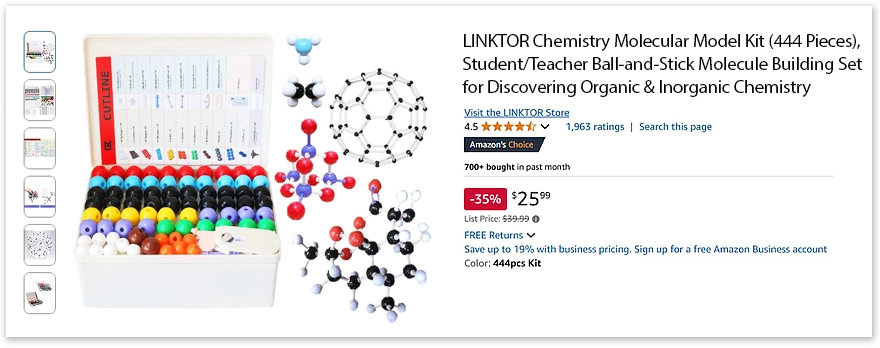
The Life of Elon Musk
So you have this dream of changing the world? For Elon Musk, this isn't enough. His ambitions are multiplanetary. The ultimate goal, to spread the seeds of humanity off Earth, theoretically improves the chances of our species outliving extinction level events.
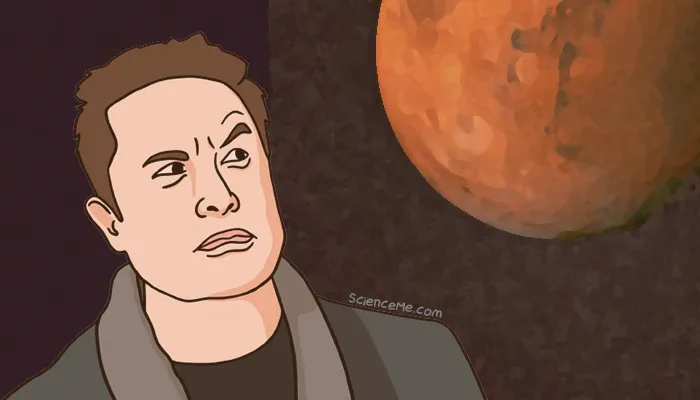
Through his space exploration company, SpaceX, Elon Musk plans to send five uncrewed Starships to Mars in 2026. If successful, a crewed mission to Mars could follow in the 2028 launch window, when Earth and Mars are closest. Ultimately, if humanity can overcome the great many technical challenges, it could lead to the first million-person city on Mars this century.
I'd like to die on Mars. Just not on impact.- Elon Musk
But how did Musk get to this point? How did he find the money for such extravagant space dreams? And how will it be affected by his $44 billion buyout of Twitter?
Early Life (1971-1989)
Elon was born in South Africa in 1971 to Errol, an electromechanical engineer, and Maye, a model and nutritional scientist. Elon grew up with his younger brother and sister, Kimbal and Toska, in the suburbs of Pretoria.
Being on the autism spectrum, Elon took to certain ideas obsessively. This gave him the ability to absorb lots of information about specialist subjects. But it also meant he found it hard to interpret the language, mindset, and social cues of other people.
I would just tend to take things very literally... but then that turned out to be wrong. [People were not] simply saying exactly what they mean, there's all sorts of other things that are meant, and it took me a while to figure that out.- Elon Musk
When his parents divorced in 1979, Elon initially lived with his father and threw himself into computer programming. By age 12, he made a video game called Blastar and sold it to the magazine PC and Office Technology for $500.
Teenage Elon adored science fiction. He devoured Isaac Asimov's futuristic series, Foundation, and was deeply inspired by its message to prolong and advance civilisation. This kid dreamed big. Unfortunately, his love of humanity was seen as not cool
by the bullies who routinely attacked him, once throwing him down a flight of stairs and beating him unconscious.
Elon also suffered at the hands of his dad, who Maye Musk described as physically, financially and emotionally manipulative and abusive
. Though little is known about Errol Musk, he has spoken openly about killing three men during a home invasion, cheating on his wife, and having children with his own step-daughter. Today, Elon and his dad are estranged.
He's a terrible human being... Almost every evil thing you could possibly think of, he has done.- Elon Musk
Education (1989-1994)
After graduating high school, Elon escaped his homeland to spend a year working at a farm and lumber mill in Canada. According to Ashlee Vance's biography of Elon Musk, he studied for two years in Ontario before transferring to the University of Pennsylvania to graduate with degrees in Economics and Physics.
In 1994, Musk held two summer internships in Silicon Valley: one in an energy storage start-up, and another at a video games publisher. He then started a PhD in Applied Physics and Materials Science at Stanford University, but quit after two days to crack on with saving the world and everything.
Zip2 (1995-1999)
In 1995, Elon started a software company called Zip2 with his younger brother, Kimbal. They developed an online city guide for the newspaper industry, providing interactive maps and business information. This was a decade before the release of Google Maps, when the internet was making its way into most homes.
But with $100,000 in student debt, Elon couldn't afford an apartment. So the brothers hired an office space in Palo Alto where they worked, ate, and slept. They had a single computer between them; the website was live during the day, then they coded and updated it at night.
I found it rewarding to spend all night programming computers, just by myself... But I think that is not normal.- Elon Musk
Later, angel investors including Errol Musk contributed $200,000 to keep Zip2 afloat and ultimately help secure contracts with publishing giants like The New York Times. After four years, they sold sold Zip2 for $307 million, with Elon netting $22 million from the deal personally. Time to buy a yacht and live the good life, no? Not this guy.
The Original X.com (1999-2002)
After Zip2, Elon invested $10 million into his next start-up company, X.com, along with three other co-founders. It was an ambitious project to develop a secure e-payment system, and was one of the first online banks whose funds were federally insured. It also set the standard for his rollercoaster career:
- 1999 - Musk ousted as CEO due to inexperience
- 2000 - X.com merges with Confinity (PayPal)
- 2000 - Musk returns as CEO
- 2000 - Musk ousted again and replaced by Thiel
- 2002 - eBay buys PayPal for $1.5 billion
As the largest shareholder of PayPal, Elon received more than $100 million. With the benefit of hindsight, we might say that his software companies were experiments in making money, of which he would need a great deal to go to space. And that's exactly where we go next.
SpaceX (2002-Present)
Enter Space Exploration Technologies Corp, or SpaceX, whose name can't be said without inducing unconscious thoughts of low-gravity lovemaking. Musk founded SpaceX in 2002 with the goal of designing, building, and operating reusable space rockets. He saw single-use rockets as a non-starter for a multiplanetary civilisation, and set his mind to reducing the cost of shooting people into space.
Finally, Elon could do what he'd always dreamed about. He starting designing and building autonomous space rockets—and that's when the real challenges began.
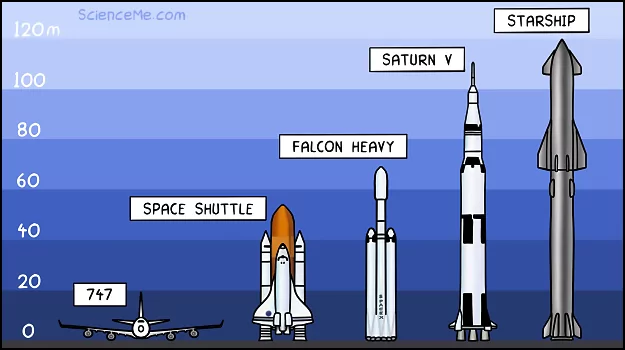
The 747 (Boeing, 1969), Space Shuttle (NASA, 1981), Falcon Heavy (SpaceX, 2013), Saturn V (NASA, 1966), and the Starship (SpaceX, 2021).
Musk declared 2008 as the worst year of his life. Three test launches of his debut rocket, the Falcon, exploded before reaching orbit. For SpaceX to continue, it was essential to log a successful test flight. Yet time after time, the rocket failed.
Engineering woes ruined Musk financially and emotionally. He woke from nightmares screaming and was in physical pain from the stress. Meanwhile, fresh out of a divorce from the mother of his five children, all three of his tech companies—SpaceX, Tesla, and SolarCity—were on the verge of bankruptcy.
Always bear in mind that entropy is not on your side.- Elon Musk
Relief came when a fourth launch saw the Falcon make a successful round-trip to orbit, 480km above Earth. Confidence was restored. SpaceX began developing larger orbital rockets, and NASA locked down the Dragon spacecraft to ferry astronauts to and from the International Space Station.
In 2019, Falcon rockets began putting Starlinks in orbit. There are now more than 5,000 Starlink satellites in low Earth orbit, providing internet coverage to 40 countries. SpaceX plans to deploy 12,000 satellites in the near term, which will generate $30 billion in revenue by 2025.
SpaceX has also developed the whopping great big Starship. At 120m tall when stacked and fuelled, it's a reusable spaceship that will take many humans to live on Mars. The Starship made its first autonomous launch in 2020 to reach a target altitude of 12.5km, make a perfectly controlled descent, and then crash spectacularly on the landing burn.
This was the first of four Starships to make a Rapid Unscheduled Disassembly, or RUD, which is the polite way of saying they exploded into bits. Musk assures us this is all par for the course in autonomous rocket engineering. The Starship's first successful landing occurred in 2021, when the SN15 reached an altitude of 10km and returned to the South Texas test site intact.
The Starship made its first integrated test flight in April 2023 but spun out of control and disintegrated about four minutes in. Ongoing test flights are helping SpaceX engineers refine the Starhip so it can start moving real payloads. Initially, Starships will be used to put more Starlinks in orbit, as well as taking cargo and people to the Moon under NASA's Artemis program. With the help of SpaceX, NASA will build a base camp on the Moon's surface and a Gateway depot in lunar orbit.
That's a wild thought. Just as we're getting our heads around the idea of a few dozen astronauts poking around in the dust, Elon Musk is planning to seed the alien planet with a permanent, self-sustaining population.
Excluding organic growth, if you could take 100 people at a time, you would need 10,000 trips to get to a million people.- Elon Musk
He further elaborated that those 10,000 trips exclude cargo; it's more realistic to expect at least 100,000 Starship trips to Mars to set up a million-person city. If you're wondering whether life on Mars is even an option for 21st century humans, check out my article: Can We Live on Mars?

The first city on Mars will be a self-sustaining network of industrial and residential buildings.
Tesla (2004-Present)
Let's back-up a little to discover Musk's parallel tech venture into electric cars and autonomous vehicle technology. In 2004, he invested $6.5 million in Tesla and took a lead role in the architecture of electric vehicles.
| Launch Year | Tesla Model |
| 2008 | Roadster |
| 2012 | Model S |
| 2015 | Model X |
| 2017 | Model 3 |
| 2017 | Semi |
| 2020 | Model Y |
| 2023 | Cybertruck |
The EV line-up saw Tesla valued at more than $1 trillion in 2021.
To speed up the global transition to electric cars, Tesla sells its electric powertrain components to other manufacturers and has opened up the patents. The goal is to break our addiction with petrol-guzzling autos, with Musk strongly in favour of a tax on carbon dioxide emissions.
Then there's Tesla's autonomous vehicle technology, designed to improve safety and efficiency on roads by having computers drive the cars. How? Tesla cars have 8 external cameras that provide 360-degree visibility up to 250 metres away, plus 12 ultrasonic sensors that detect both hard objects (streetlights) and soft objects (people). The real-time data is processed by a deep neural network.
Autopilot is a good thing to have in planes, and we should have it in cars.- Elon Musk

The 8 cameras and 12 sensors used in Tesla's autonomous vehicles. Unlike its rivals, Tesla doesn't rely on lidar (laser sensors) or high-definition maps.
To date, Autopilot operates on highways only, while Full Self-Driving (FSD) can run semi-autonomously on city streets and residential areas. In other words, Tesla cars drive themselves but can still make mistakes, so drivers must be ready to step in at any moment.
Eventually, FSD will reach Level 5 autonomy, such that all Teslas will be able to drive anywhere, under any conditions, without human supervision. The Dojo supercomputer is now training the AI neural network through simulated driving faster than real world data.
Tesla's Q2 2024 safety analysis show Autopilot crashes once every 6.88 million miles; Teslas with human drivers crash every 1.45 million miles; and all other cars in the US crash once every 670,000 miles (NHTSA, 2022 data). While this is extremely promising data, it's worth noting some confounding variables, such as the seasonality, human intervention on Autopilot, and of course Autopilot's restriction to highways.
The transition to autonomous driving has attracted its critics. Yet the overarching logic is sound. Human error is involved in 94% of serious crashes, killing 1.3 million people worldwide every year. These are violent, sudden deaths and we'd do well to address that. In terms of efficiency, Musk looks to a time when all cars are fully autonomous and communicate with each other in real-time for superior safety, at faster speeds, and all but eliminating traffic.
Neuralink (2016-Present)
One day, Elon decided to team up with eight experts in neuroscience, biochemistry, and robotics to create Neuralink. The goal is to develop more sophisticated brain implants that will ultimately have therapeutic, cognitive, and recreational applications.
But why put computers in our brains? Consider that brain cells communicate in tiny bursts of electricity. A neural implant adds artificial neurons to the conversation, relaying data to and from an external computer. This would have a profound impact on the way we interact with machines, as well as the way we think, feel, and behave. The long term goal of Neuralink is to offer the Link to everyone, ultimately creating a human-AI symbiosis.
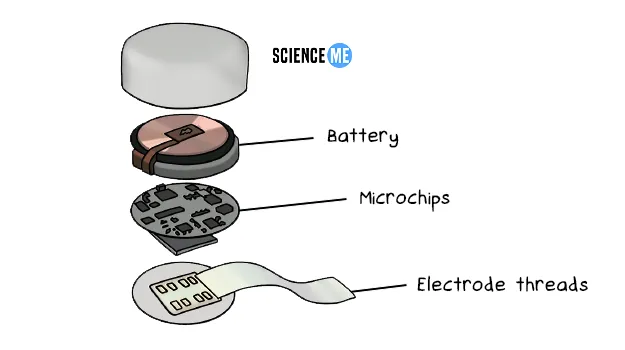
The Link BMI described in Neuralink's 2019 whitepaper.
The scope of artificial intelligence is broadening, and when it surpasses human intelligence, it won't even need our input to evolve. AI will run our stock markets, our social calendars, and our doctor appointments. It will tell us what to study, who to marry, and when to have babies.
There's no knowing what the AI will want for itself. So rather than compete with this powerful synthetic lifeform, we must cooperate and/or merge with it. Today's Neuralink is a starting point for a high-bandwidth BMI that will allow us to become part of the AI ecosystem.
We can actually go along for the ride... and we can effectively have the option of merging with AI.- Elon Musk
Read my full Neuralink explainer about the potential benefits, risks, and societal impacts of this wild future tech.
Love, Life, and Everything Else
As a self-confessed workaholic known to push 120-hour work weeks, Musk doesn't really do spare time
. But he has squeezed in a number of relationships and had more kids than most people you know.
Elon met his first wife, Justine Wilson, at university. They married in 2000, when Musk took a trip home to South Africa, contracted malaria, and almost died. The couple tragically lost their first child, Nevada, to SIDS at 10 weeks old. They went on to use IVF to have twins in 2004 and triplets in 2006. Elon and Justine divorced in 2008.
Next, Musk married and divorced the English actress, Talulah Riley, not once but twice for good measure. For a brief time he dated Amber Heard, who incidentally had a surrogate baby with a mystery father. In the last three years, Musk has had three natural and surrogate babies with the singer Grimes, aka Claire Boucher, and a set of twins with his Neuralink director Shivon Zilis.
That's a lot of babies. If my count is correct, Elon Musk has fathered 11 children in the public eye. True to his insemination of multiple women, he believes one of the biggest threats to civilisation is a population crash. Birth rates are declining globally, which means there won't be enough people to labour and innovate in future.
Beyond family planning, Musk has strong views on climate change, universal basic income, the existence of aliens, the dangers of artificial intelligence, and the likelihood that we're all living in a digital simulation.
The strongest argument for us probably being in a simulation I think is the following: 40 years ago we had Pong—two rectangles and a dot. That's where we were. Now 40 years later we have photorealistic, 3D simulations with millions of people playing simultaneously and it's getting better every year. And soon we'll have virtual reality, we'll have augmented reality. If you assume any rate of improvement at all, then the games will become indistinguishable from reality, just indistinguishable.- Elon Musk
He's referring to the Simulation Argument, a case put forward by the philosopher Nick Bostrom. It hangs on the idea that if advanced simulation technology is possible, then we're already living in it. The chance that we're living in the real world vs one of countless simulations is next to zero.
Now a thing about money. During the pandemic, Musk's net worth rose from $27 billion to $243 billion, making him the richest person in the world. Most of this came from the rising value of Tesla stock, which saw him make $295 million per day over two years.
However, the value of Tesla shares have since plummeted, driven in large part by the CEO alleviating himself of company ownership: Elon sold $22 billion in 2021 to pay tax bills, and $20 billion in 2022 to fund his buyout of Twitter (which he rebranded X). His remaining stake in Tesla is now heavily leveraged for bank loans, such that if X can't service its debt of $13 billion, Musk will lose a chunk of his remaining stake in Tesla. No pressure.
Elon Musk has got his fair share of critics. He's an aggressive businessman, a ruthless boss, and a billionaire who has it all. And while there's rising awareness and acceptance of autistic spectrum behaviours, many neurotypical folk find it hard to see the good intent behind Musk's unvarnished truthtelling.
For Musk, there is a singular drive behind the crazy: to see humanity thrive. Love him or loathe him, you can't argue with the honest drive to make things better for Homo sapiens. Well, you could, but you'd be arguing for the extinction of humanity.
To anyone I've offended, I reinvented electric cars and I'm sending people to Mars in a rocket ship. Did you think I was going to be a chill, normal dude?- Elon Musk
If this has whet your appetite for more Musk, check out Walter Isaacson's biography of Elon Musk which details his epic feats and failures. Isaacson shadowed Musk for two years, interviewing his family, friends, co-workers, and adversaries, to give us more insight into the angels and demons that drive Elon Musk.
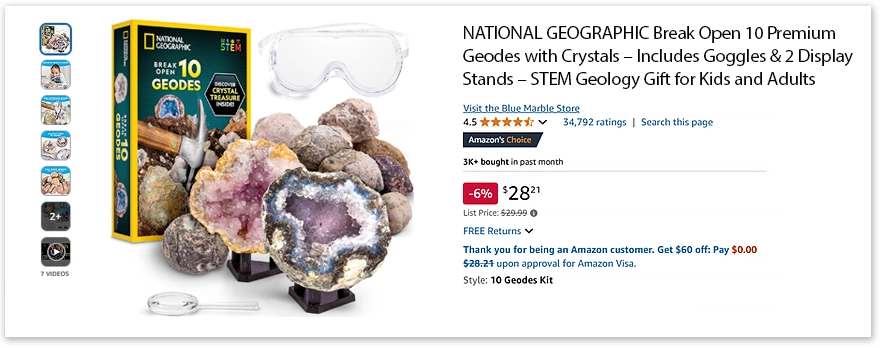

16 Giant Leaps in Animal Evolution
An evolutionary timeline of animals, from the first clumps of aquatic cells to the cracking diversity all over the world today.

15 Popular Science Books
Reading is like dipping in another person's brain pool and swimming in their knowledge. There's only one rule: DON'T PEE IN THE POOL.

Viruses: Genes Gone Rogue
Viruses are essentially runaway genes, also known as intracellular parasites, mobile genetic elements, or freeloading gits.
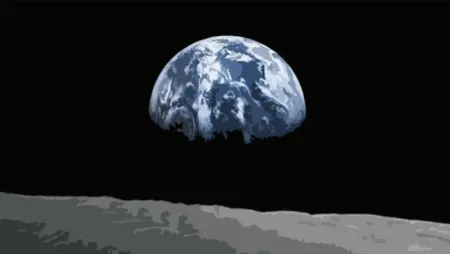
Helium Could Save Our Planet
Vast reserves of helium-3 on the Moon could supply nuclear fusion reactors, providing a clean energy source for millenia to come.
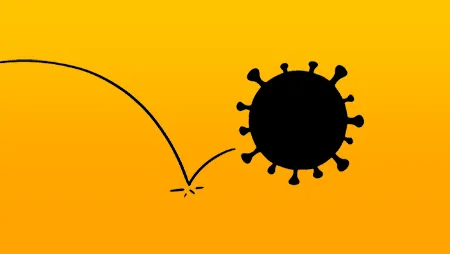
The Evolution of SARS-CoV-2
The family tree of human coronaviruses and how SARS-CoV-2 mutates through the process of rapid antigenic drift.

Dogs Are Smarter Than You Think
Dogs have greater social intelligence than our closest primate cousins, thanks to living symbiotically with humans for 40,000 years.

Who Owns Your Organs?
It's not you—it's me. While the Veto Rule is standard practice in many nations, it raises a little-known ethical dilemma.

Can We Live on Mars?
What are the challenges of colonising Mars? A look at terraforming and artificial life support to make Mars habitable for humans.